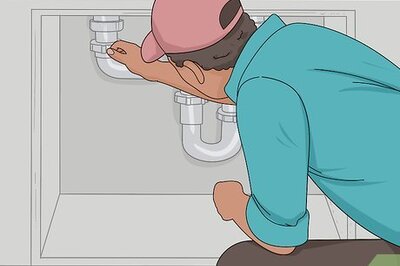
views
What Causes ERR_HTTP2_PROTOCOL_ERROR
Incompatible and outdated software. If your browser or computer is outdated, they can be incompatible with some websites.
Corrupted data cache. Corrupted cache files can prevent sites from successfully validating your device, resulting in the "ERR_HTTP2_PROTOCOL_ERROR" message.
Browser extensions. Some third-party extensions can interrupt communication between your computer and the website's server, which prevents the website from loading properly or triggering the error message.
Third-party antivirus or firewall software. Some third-party can prevent you from accessing certain sites, due to security settings. If you're hosting a site and running into this issue, there are other things you need to watch out for including: Incorrect SSL configuration Incorrect HTTP/2 settings with the website's server No disk space on server
Common Fixes
Update your browser. Since outdated software can house many bugs and glitches, it's best to keep everything updated. You can generally find an option to update your browser in the Settings menu, although the specific steps are slightly different for all web browsers.
Clear browser data. Since corrupted data and cached files can trigger the error message, you want to delete what your browser has stored to see if the page will load. You can read this wikiHow article for specific steps to clear your browser data according to what browser you're using. Alternatively, use a Private or Incognito window so you don't have to delete your browsing history. Since this doesn't solve the error in your main browser, it's a temporary solution that'll let you access the site quickly.
Disable browser extensions. Since some extensions can interrupt communication between your computer and the website's server, turning these off will eliminate that interruption so the page can load. Follow the steps outlined in this wikiHow article to disable your extensions or add-ons for your specific browser. Generally, you can find a "Manage extensions/Add-ons" page. You can turn them on one by one and load the page to see if you get the error message; as soon as you do, you know that the last extension/add-on you turned on is causing the error message. Then you can update or uninstall that extension/add-on.
Check your firewall or antivirus settings. Follow the steps in this wikiHow article to check your Firewall and see if it's blocking the site. If you're confident that the site you're trying to see isn't malicious, you can turn off your firewall or antivirus software on your computer. You can also open ports to allow the traffic from that site. If you're hosting a site, make sure to check the following: Check that the SSL certificate is configured correctly and has not expired. Make sure the web server isn't out of space or that it has HTTP/2 configured correctly. Update your server software. Contact your host provider to check for server issues.




















Comments
0 comment